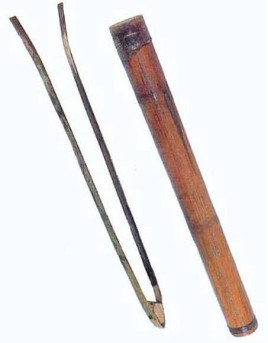The history of bamboo piano
The original name of Zhuqin is Daoqing, and its native place is most likely Sichuan, because the earliest Taoism genre, Wudoumi Dao (also known as Tianshi Dao), was born in Heming Mountain (a Huming Mountain) in Dayi County, Sichuan. During the initial period of Wudou Rice Dao (the period of Zhang Ling and his sons, Sun Zhangheng and Zhang Lu), the "Zhi (decision) Jiaozhai", "Tu Tanzhai" and other fasting rituals developed into twelve fastings in the Southern and Northern Dynasties, and formed a system including "Buxu". Taoist music including phonology".

A distinctive feature of Taoist music is that it absorbs Sichuan folk music including the "Bayu Ci" (ie "Bamboo Branch Ci") in seven-character and four-sentence style. (Of course, it also absorbed folk music and Buddhist music from other regions.) Up to the Five Dynasties, "Xuantan Magazine Mistaken" also recorded: "Daoqu continued to "Guangchen Zale, Ba song and Yu dance, all involved in it".
More importantly, "Buxu", as a form of Taoist music, was officially used in Taoist fasting rituals, and it was also in Xishu during the pre-Shu period (907-925).
This can be seen in the classics such as "Supreme Huang Zhuan Da Zhai Li Chengyi" and "Daomen Kefan". Daoqing evolved on the basis of step-by-step words (or words and step-by-step sounds). After entering the Song Dynasty, the Taoist priests (or Yunshui Taoist priests), in order to facilitate the preaching of Taoism, transformed the gorgeous and mysterious Buxu Ci into a kind of civilian-like transformation, forming an easy-to-understand Taoism (but still retained in form). Five-character, seven-character and other rhyme styles).
In the forty-four chapters of "Journey to the West" and so on, Sun Wukong was in the country of Chechi, "transformed into a wandering Yun Shui Quanzhen, with a water and fire basket hanging on his arm, beating a fishing drum with his hand, singing Taoism. Words..." The reason why Wu Chengen from the Ming Dynasty described it in this way was roughly because Daoqing was a popular folk rap art at that time. Zhang Guolao and Lan Caihe in the "Eight Immortals" in Chinese folklore are also the images of wandering Taoist priests holding a fishing drum and a simple board.
However, the main musical instrument of Taoism is the material body of the fishing drum and the simple board--bamboo (the fishing drum is the Taoist tube, which is tied to the bamboo tube and covered with fish skin or the carpels of pigs and sheep; the simple board is composed of two bamboo pieces. ) to name, it is unique to Sichuan, called "bamboo qin".
This wonderful interpretation of another category of Taoism as one of the rap arts--bamboo literature and art (which also belongs to the category of bamboo culture) is the result of Mianyuan's profound Sichuan bamboo worship--the result of the influence and effect of bamboo culture atmosphere .
This result is also a reminder: in the atmosphere of bamboo worship-bamboo culture, Taoism as a branch of bamboo literature and art was first born, which is a logical and natural thing. However, according to the existing information, Daoqing has the nickname of "bamboo qin", which should be related to the Guangxu period of the Qing Dynasty (1875--1908). For example, in the 34th year of Guangxu's reign (1908), "Xuyong Yongning Hall County Hezhi" contains Li Shengchun's "Danya Yuan Yechun Lantern Ballad", which contains the sentence "there is another pair of cloud carriages, the bamboo qin and Qiang flute have a thick tone" - this It is roughly the earliest record of the name "bamboo qin".
 渝公网安备 50010702504639号
渝公网安备 50010702504639号